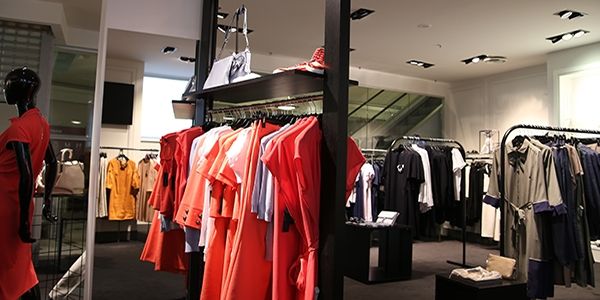
Project Management Strategies for Succeeding in the Fashion Industry
The fashion industry is one of the fastest-growing ones and it’s probably more unpredictable than any other.
What is “hot” today may easily not be popular tomorrow, which makes it very difficult to plan for very long periods in the future. Still, this industry needs people who know how to manage all its aspects and we can only admire them for their skills.
What people see are models showing the latest fashion trends on the runway. Some are relatively conventional, while others are quite eccentric and we enjoy looking at these works of art, but we probably don’t know what is going on behind the scenes of a fashion show. Instead, we simply admire the final result. For this result to be achieved, teams of people have worked tirelessly for months to prepare such an event and they had to be managed properly. To help you understand what happens behind the scenes, we’re prepared this list of the crucial project management strategies for succeeding in the fashion industry.
Stakeholder management
This refers to your knowledge of the market and customers, as well as your ability to successfully deal with a number of stakeholders who have an impact on your company. The list is quite long and includes, among others, trade organisations, suppliers, sponsors, partners, buyers ad distributors. If you want your company to grow and be successful, you have to establish a transparent collaboration, which facilitates excellent communication with all of them.
Planning
There are many different types of projects in fashion. They range from opening a shop (physical and/or online) to product launch, organising a fashion show or entering a new market. Each project requires a plan that will turn your vision into reality. You need to have a plan that factors in all the vital steps to reach your goals. This is one of the trickiest things, since the fashion industry is moving fast, but that doesn’t mean you can’t plan. Actually, it means you have to devote more attention to planning, because you want your company to produce new fashion items as successfully as possible. With the fierce competition in the industry, this task is harder than ever, which only makes it more important.
KPIs
Each process needs to be analysed to ensure the project is efficient. However, knowing what, when and how to analyse is quite a challenge. The key is analysing relevant aspects, eliminating human bias and producing actionable data that can be used for preparing, planning and managing projects. Choose the minimum of indicators that reflect crucial parameters and trends, such as time, cost & revenue, work efficiency and work quality to get a clear picture of the direction your project is heading. Forward-thinking companies are now using a digital marketing dashboard to automate the process of data collection and processing, thus saving a lot of time.
[widget id=”custom_html-68″]
Risks and changes
With changes happening constantly in the business, it’s vital you stay on top of your game at all times. No matter how long your company has been successful, it you fail to anticipate future trends and identify challenges, you won’t stand very good chances of surviving. That’s why fashion companies have to identify possible risks (production failures, supply chain errors, etc.) and be prepared for sudden changes (demand change, regulatory changes etc.). Also, they should be aware that customers are much more conscious of the social impact of fashion’s pursuit of producing clothes as fast as possible. It’s true that producing cost-efficient items is important, but negative media coverage can have a devastating impact on any business and ruin a brand’s image. Hence, you need to wage the risks and benefits carefully and balance them out.
Agility
It’s very important that a fashion company and its management are agile and flexible. This means that processes, such as sales, customer management or supply chain management will be more efficient, i.e. lead to higher and faster turnover of products and better position on the market. Agility also encompasses the notion that project teams work and collaborate more efficiently. All this is eventually translated in boosted reputation and improved business results, which are the goals of every company in the world. Going by what a new Bachelor of Arts in fashion design at Raffles Milan teaches its students, the fashion system is a huge, articulated, often unpredictable territory, where a sense for the classics manages to find common ground with the extremes of experimentation.
Teamwork
A lot has been said about the importance of teamwork, and fashion companies should know it better than most other businesses. Any misunderstanding or problem in communication can have detrimental effects on the outcome. That’s why it’s important to have regular review meetings to discuss decisions and analyse processes. Every team member needs to know exactly what their responsibilities are. We can’t stress enough how crucial communication and collaboration are in the fashion industry. The ultimate goal of producing a clothing line as efficiently and quickly as possible can’t be reached unless everyone involved works together effectively.
These strategies are very important for most industries, but when it comes to the fashion industry their role simple gets more important. That’s why every project manager should be aware of them and apply them in such a way that they help the company reach its goals.
https://forbrukslan.info
… [Trackback]
[…] Information on that Topic: projecttimes.com/articles/project-management-strategies-for-succeeding-in-the-fashion-industry/ […]
Medicijnen bestellen zonder recept bij Benu apotheek vervanger gevestigd in Rotterdam
… [Trackback]
[…] Here you can find 69520 additional Information to that Topic: projecttimes.com/articles/project-management-strategies-for-succeeding-in-the-fashion-industry/ […]
Best universities in Africa
… [Trackback]
[…] Find More on to that Topic: projecttimes.com/articles/project-management-strategies-for-succeeding-in-the-fashion-industry/ […]
producatori ventilatoare industriale
… [Trackback]
[…] Find More Info here to that Topic: projecttimes.com/articles/project-management-strategies-for-succeeding-in-the-fashion-industry/ […]
Hotels in Latvia
… [Trackback]
[…] There you can find 35729 additional Information to that Topic: projecttimes.com/articles/project-management-strategies-for-succeeding-in-the-fashion-industry/ […]